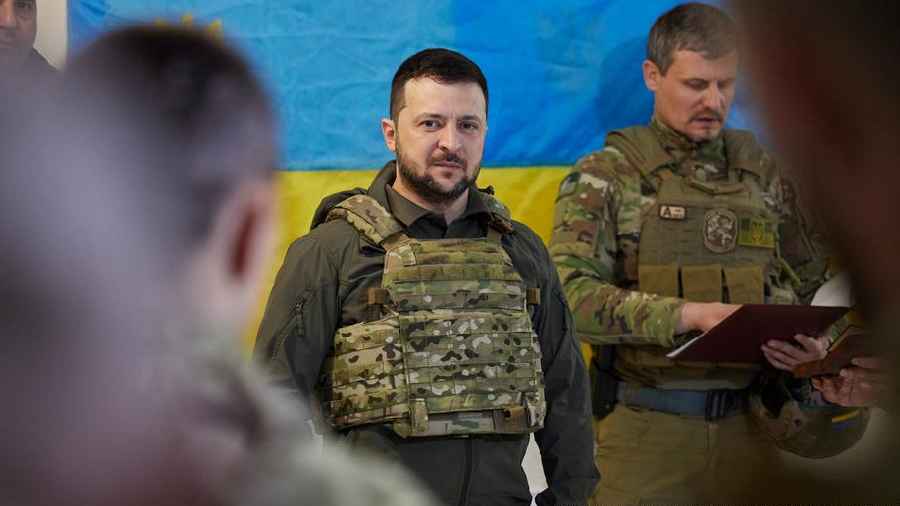When the year began, the debate on Ukraine had already started. Vladimir Putin was amassing his troops around Ukraine. It was widely believed that this was part of a diplomatic manoeuvre to push for a renegotiated settlement with Europe. The West was trying to ensure that war doesn’t return to Europe. The world was nervous but few believed that a full-fledged war was in the offing.
And, yet, it happened, forever changing the geopolitics of Europe and the world. Since that fateful day on February 24, when the Russian invasion began, it has been estimated that more than 100,000 Russian and 100,000 Ukrainian soldiers have been killed or injured, along with some 40,000 civilian deaths. Over 7.8 million Ukrainians have been made refugees.
During his recent visit to the United States of America, Volodymyr Zelensky defiantly told members of the US Congress that his nation will never surrender. “Just like the brave American soldiers who held their lines and fought back Hitler’s forces during the Christmas of 1944, brave Ukrainian soldiers are doing the same to Putin’s forces this Christmas,” he said. In his attempt to convince the US to keep supporting the Ukrainian war effort, Zelensky pitched it as an investment in security for the future even as he predicted a “turning point” in the conflict next year.
But Zelensky also knows that the next few months are critical. Even though Joe Biden pledged a new $2 billion aid package with an additional $45 billion in the pipeline, there is growing disquiet among a section of Republicans about the continuing costs of the American war effort. Significantly, there is war fatigue in the US, with a third of Americans no longer backing continued US aid to Ukraine and around half wanting Ukraine to settle for peace.
Russia will be hoping that a harsh winter will not only dwindle public support for the war in Ukraine but also test the European resolve to stand by Kyiv. Moscow has accused the US of fighting a proxy war in Ukraine and Washington’s delivery of Patriot missiles is likely to aggravate this sense further.
The war in Ukraine may or may not end soon, but it has significantly transformed the global landscape. Structurally, it has accelerated the trend towards global polarisation. The West’s antagonism vis-à-vis Russia is now firmly embedded in the wider US-China contestation as the Russia-China axis has been cemented further. As Europe strengthens its security outlook and military capabilities, it is being forced to take a relook at its engagement with China. While Putin may have shaken the foundations of the European architecture created after the Second World War, there is now a realisation that the long-term threat is more likely to come from the Indo Pacific where Xi Jinping is waiting to strike at an opportune time. This also means that new institutions and frameworks are needed to respond to the needs of these volatile times. The multilateral order is now grasping for breath and the structural polarisation will ensure that it will be seen as a vestige of the old order. The move towards the new model of plurilateral and minilaterals is a response to these times. Small groups of like-minded nations are going to be more effective in finding solutions to global and regional problems.
The Ukraine war has also raised questions about the way in which the militaries will fight the wars of the future. The conflict has bared the role of new technologies in shaping the battlefield as well as the diminishing effectiveness of non-military coercive measures. This has been the first major cyber conflict between two contestants, with Ukraine dominating the battle in digital information. Russia’s failure to adapt to decentralised command and control practices has also been a revelation.
The Ukraine war will shape global politics for years to come. For India too, it has raised profound questions pertaining to its foreign and security policy choices as well as the way it needs to reconfigure its military to fight the wars of the 21st century.
Harsh V. Pant is Professor of International Relations, King’s College, London











